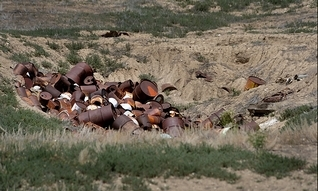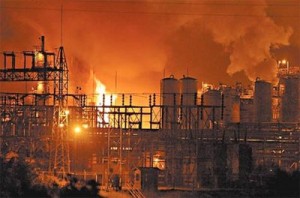23
Sep
Groups Say Science on Glyphosate Disqualifies It for Reregistration
(Beyond Pesticides, September 23, 2009) On September 21, 2009, Beyond Pesticides, joined by 32 other groups and individuals, submitted comments to the U.S. Environment Protection Agency (EPA) showing new and emerging science which illustrates that glyphosate and its formulated products pose unreasonable risk to human and environmental health, and as such should not be considered eligible for continued registration. EPA opened up the Glyphosate Registration Review for comments on July 22, 2009 with a window for submitting comments extending to September 21, 2009.
Beyond Pesticides does not believe that glyphosate should be eligible for registration on the grounds that: human exposures to glyphosate pose unacceptable risks; Roundup formulations are toxic, yet go unevaluated; Food Quality Protection Act (FQPA) 10x (additional margin of safety) factor must be reinstated; Polyethoxylated Tallowamine (POEA) surfactant; glyphosate and Roundup threaten water quality and aquatic life; glyphosate and Roundup-ready crops lead to increasing resistance; and human incidents are too high.
As demonstrated in the comments submitted by Beyond Pesticides, herbicide resistance is on the rise. When genetically engineered food products, such as Roundup-ready crops, were commercially developed in the 1990’s, they were sold to the public as a technology that, among other things, would reduce pesticide use. In reality, it has done just the opposite. There are many concerns about genetically engineered food, as is demonstrated in our Daily News Article, Physicians Call for Immediate Moratorium on Genetically Engineered Foods. Roundup-ready crops, which are genetically engineered to be resistant to Monsanto’s best selling herbicide Roundup have been a boon to Monsanto’s profits, but not without environmental costs. The use of Roundup-ready crops increases the use of glyphosate products and in turn increases the onset of resistant species. In general, in regions of the U.S. where Roundup-ready crops dominate, there are now evolved glyphosate-resistant populations of economically-damaging weed species. For more dangers on genetically engineered foods, see our factsheet.
Glyphosate is found in two Monsanto products, available over the counter: Roundup and Rodeo. These are two of the most widely used and well-known herbicides on the market. Glyphosates are being used in such abundance because genetically engineered (GE) crops are modified to be resistant to this chemical, thus necessitating more glyphosate use.
Some of the most widespread uses of glyphosate that have been attracting public attention include its use in invasive weed management and home gardening. The increase of glyphosate use in these areas is directly tied to the larger problem of poor land management, including over grazing, over development, soil compaction and other stressors. Glyphosate has replaced ecologically sound and sustainable cultural practices such as green-mulching and preventive maintenance such as aeration and dethatching.
Glyphosate poses unacceptable risks to humans. Due to such widespread use of the weed killer glyphosate and the prevalent myth that it is harmless, it has been linked to acute human health effects such as non-Hodgkin’s lymphoma. Another recent study found that Roundup kills human embryonic cells.
Glyphosate is also harmful to the environment, particularly aquatic life and water quality; glyphosate has been linked to intersex frogs. Roundup is lethal to amphibians in concentrations found in the environment.
Roundup formulations include glyphosate and “inert” ingredients. Despite their name, these ingredients are neither chemically, biologically or toxicologically inert. In general, inert ingredients are minimally tested, however, many are known to state, federal and international agencies to be hazardous to human health. All pesticide formulations are actually toxic soups, a mixture of the active ingredient (the registered pesticide) with a variety of other chemicals such as solvents, surfactants (like POEA), and emulsifiers — the inerts. Federal law classifies inerts as trade secrets and pesticide manufactures are not required to list inert ingredients on the pesticide label. Inerts, which can make up to as much as 99% of a pesticide formulation, are often highly toxic chemicals that can be more hazardous than the active ingredient.
For more information, please visit our glyphosate page and alternatives to toxic herbicides.


















